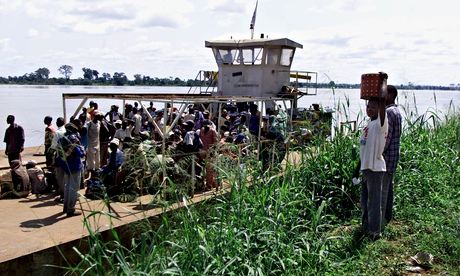
Divers today scoured the sunken fuselage of the crashed AirAsia jet in the Java Sea but failed to retrieve the main wreck or any more bodies of the 162 people as bad weather and high waves forced searchers to suspend operations.
The fuselage of the crashed AirAsia Flight QZ8501 — that officials believe contains the remaining bodies of victims who boarded the ill—fated plane — was found by a Singaporean Navy vessel yesterday about 3 kms from where the tail of the aircraft was pulled from the seabed.
The operation to lift the fuselage — attached to part of a wing, the wreckage 26 metres long — from the seabed has so far failed, chief of Indonesia’s search and rescue agency BASARNAS Fransiskus Bambang Soelistyo today said.
Authorities have been attempting to lift the fuselage with balloons, a procedure they also used to hoist the tail section of the Airbus A320—200, that usually contains the crucial black box.
All 162 people were killed after the plane, en route from Indonesia’s Surabaya city to Singapore plunged into the Java Sea on December 28. The pilot had requested to fly higher due to stormy weather but was denied permission because of heavy air traffic in the sector.
The past week has been significant in the slow—moving multi—national hunt that has persistently been hampered by bad weather, with the recovery of the crucial black box as well as the tail. The black box recorders are expected to help investigators determine the real cause behind the AirAsia group’s first fatal accident half way into a two—hour flight.
Divers now face the grim task of recovering the dead bodies as only 50 of them have been recovered so far, of which 38 have been identified.
A team of 15 divers plunged into the water early today to examine the main portion of the jet, but failed to determine whether the wreckage can be lifted by using large balloons or if bodies need to be retrieved separately if found inside it due to bad weather and high waves, search and rescue agency coordinator S B Supriyadi said.
Some divers descended again in the afternoon, he added.
The mission to locate the victims will continue, even if no bodies are found in the fuselage, he said, adding success and failure is part of every mission, and that once the mission is no longer effective or efficient, the operation will end.
Recovered bodies will be sent to East Java’s police headquarters in Surabaya for identification.
The search was now being scaled back, with most international vessels leaving, according to officials.
Thursday 15 January 2015
http://www.thehindu.com/news/international/divers-fail-to-retrieve-more-bodies-airasia-jets-fuselage/article6792731.ece


